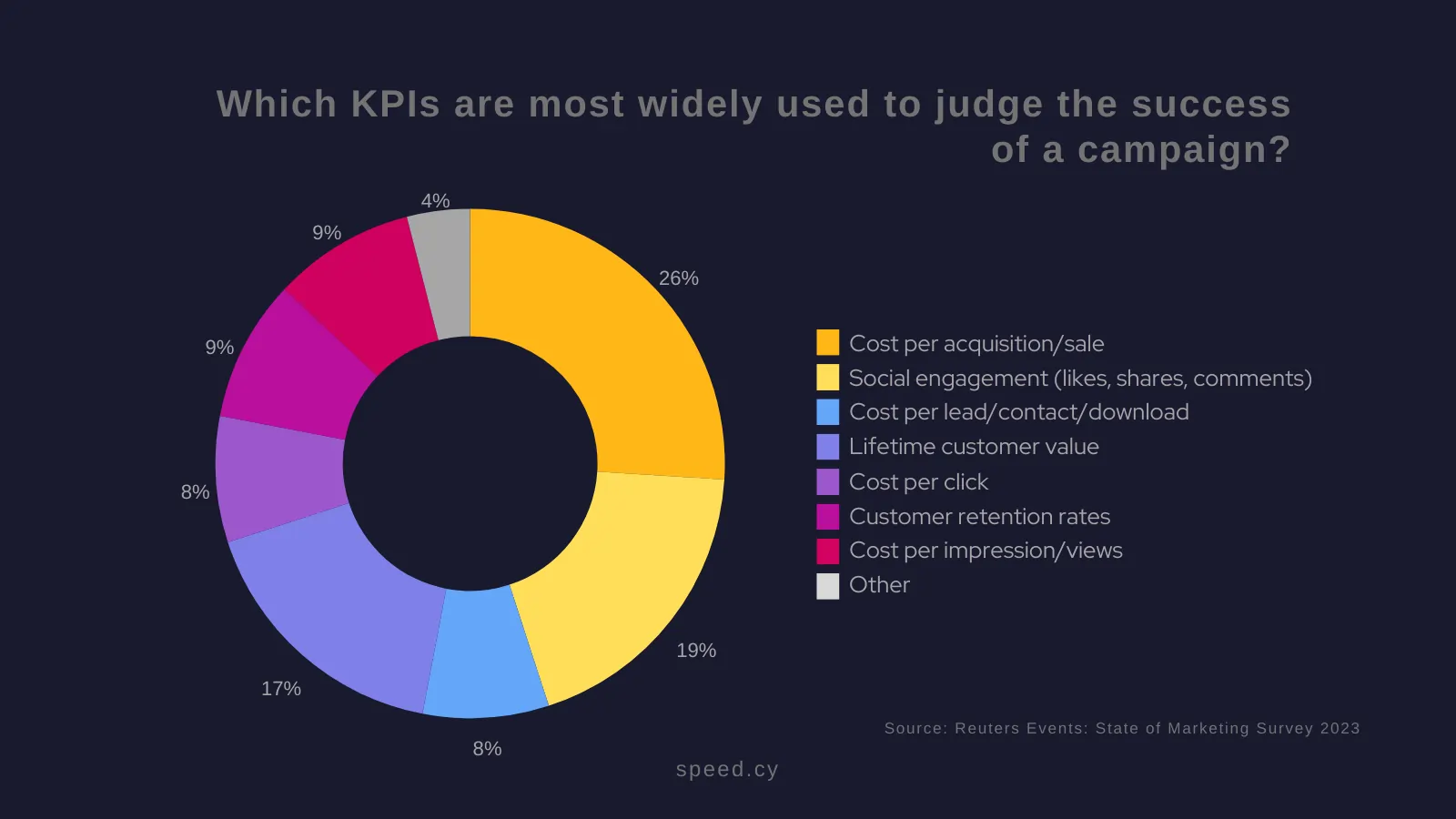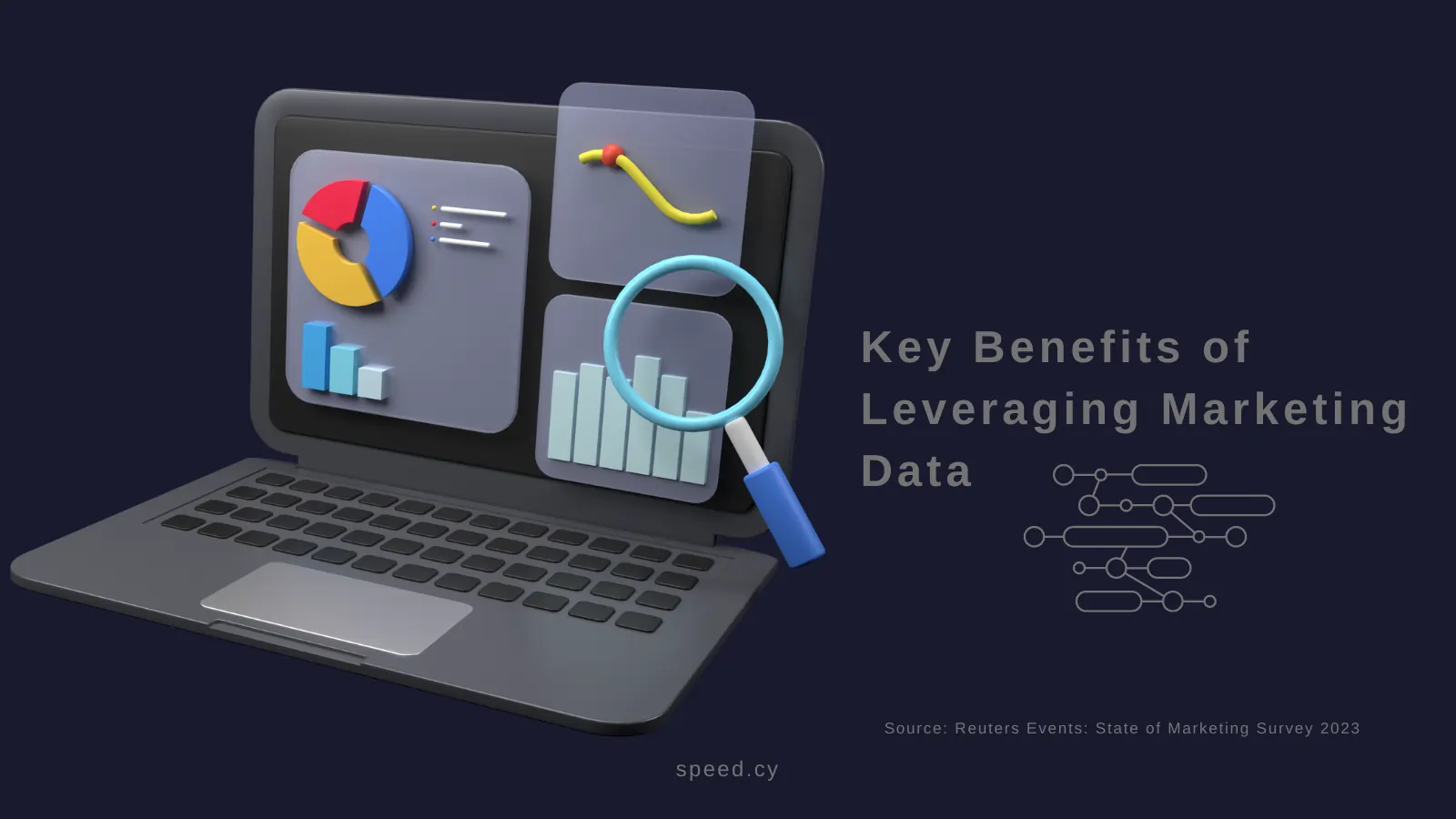Today the world is digitally driven, no doubt! Marketing data is a priceless asset. Did you notice it? But with great data comes great responsibility. 😛
Like a prospector striking gold, today’s marketers are awash in shiny new data. Web analytics gushing with visitor insights. Social media resonating with customer sentiment. But raw data on its own is just noise. To strike it rich, you need to mine for strategic insights.
That’s the marketer’s mandate in this data-rich era. Sift and refine grains of consumer understanding from rivers of digital information. Turn clickstreams into customer clarity with analytics alchemy. Cast data breadcrumbs that entice prospects along the conversion trail.
This is the promise and potential of marketing analytics. Yet also the challenge. Study after study shows companies struggling to squeeze strategic value from their data investments. Opportunities for optimization and growth left undiscovered in plain sight.
Why do many marketing mavens miss the mother lode? Data overload. Analysis paralysis. Failing to frame the right questions. Not converting insights into action.
But with the right focus and skills, marketers can strike data gold. This guide will uncover proven methods to:
- Collect the marketing data that matters most
- Mine databases for powerful consumer insights
- Refine analytics into strategic recommendations
- Take data-driven action to delight customers and dominate markets
So, grab your picks and pans. It’s time to sift through marketing data and uncover the golden opportunities waiting to be seized. Are you ready to stake your claim?

The Growing Role of Marketing Data
Marketing data refers to quantitative and qualitative information related to marketing operations and strategies. This encompasses both internal data from company sources and external data about customers, competitors, and markets.
Sources of marketing data include:
- Web analytics
- CRM systems
- Social media monitoring
- Surveys and focus groups
- Online listening tools
- Sales data
- Financial performance metrics
The importance of marketing data continues to grow for several key reasons:
Digital Transformation
- Digital marketing channels generate detailed user data and analytics. This enables more targeted marketing and personalization.
Growth of Martech
- Marketing technology expands data collection and analysis capabilities. Marketers can integrate data from multiple platforms.
Shift Towards Data-Driven Decisions
- With so much data available, there is an expectation to base marketing strategies on data-driven insights.
Need to Prove ROI
- In a digital landscape, marketers must quantify results and demonstrate return on investment (ROI) of activities.
Key Benefits of Leveraging Marketing Data

Effectively harnessing marketing data provides game-changing advantages:
Enhanced Customer Understanding
- Data reveals who customers are, what they want, and how to best engage them across channels and devices.
Improved Campaign Optimization
- Marketing analytics enables real-time optimization and refinement of campaigns based on performance data.
Smarter Resource Allocation
- By measuring data like cost per lead or sale, marketers can shift budgets to high-performing initiatives.
Increased Personalization
- Data fuels personalization engines to deliver tailored messaging and experiences.
Reduced Risk in Decision-Making
- Data provides fact-based insights to reduce assumptions and risk in strategic decisions.
Higher ROIs from Marketing
- Data-driven marketing leads to cost savings, waste reduction, and resources focused on what delivers results.
In summary, marketing data powers more impactful, optimized, and customer-centric marketing.
Challenges with Collecting and Analyzing Marketing Data
However, leveraging marketing data to its full potential isn’t always straightforward. Here are some of the top challenges:
Data Overload
- The sheer volume of marketing data from multiple sources can be overwhelming to sort through.
Data Silos
- When data is isolated in silos across different platforms and teams, gaining a unified view is difficult.
Identifying the Right Metrics
- With so many metrics available, determining the best KPIs to focus on is crucial yet can be confusing.
Data Quality Issues
- Inaccurate, incomplete, or inconsistent data severely limits analytical value.
Lack of Analytical Acumen
- Many marketers lack experience and skills for extracting strategic insights from data.
Communicating Data Insights
- Translating data into compelling insights and recommendations for stakeholders can be challenging.
Turning Insights into Action
- Organizations often fail to convert data-driven insights into strategic actions and improvements.
Best Practices for Marketing Data Analysis
Mastering marketing data analysis involves focus on several key best practices:
Maintain a Unified Data Set
- Integrate data from all sources into a centralized database for a single source of truth. Use data warehouses and pipelines to eliminate silos.
Identify Relevant KPIs
- Focus analysis on the key performance indicators most aligned to business and campaign objectives.
Perform Regular Analytics Audits
- Audit analytics setup regularly to confirm tracking works properly and identify data gaps.
Leverage Data Visualizations
- Visualizations like charts make complex data easier to grasp and share with stakeholders.
Invest in Analytics Training
- Educate marketers on skills like SQL, data modeling, statistical analysis, and visualization tools.
Put Insights into Action
- Don’t let analysis be an end unto itself. Use insights to drive data-based marketing optimization and improvement.
Build a Testing Culture
- Cultivate a culture of continuous testing and experimentation based on insights revealed in the data.
Monitor ROI
- Rigorously measure marketing return on investment and refine strategies based on ROI data.
Automate Where Possible
- Automated reports, alerts, and data sharing streamline analysis and communication of insights.
Partner with IT and Engineering
- Collaborate across teams and leverage engineering resources for collecting and analyzing data at scale.
By championing these best practices, marketers can overcome obstacles and maximize the value extracted from marketing data.
Types of Marketing Data Analysis to Master
Taking full advantage of marketing data requires competency across both quantitative and qualitative analysis approaches.
Quantitative Marketing Data Analysis
Quantitative data analysis deals with measurable, numerical marketing data. Key techniques include:
- Statistical analysis – Applying statistical models to marketing data sets to identify statistically significant patterns and trends.
- Performance analytics – Tools like Google Analytics to monitor and analyze all aspects of marketing performance.
- Web analytics – Analysis of visitor traffic, engagement, conversion, and behavior on websites and apps.
- Marketing attribution modeling – Determining value and ROI throughout the customer journey across multiple touchpoints.
- Predictive analytics – Using machine learning and AI to make data-driven predictions about future outcomes and trends.
- Marketing mix modeling – Statistical analysis of how marketing inputs like advertising and pricing affect sales and revenues.
- Sentiment analysis – Using text analysis and natural language processing to determine sentiment from social media, reviews, and survey data.
Qualitative Marketing Data Analysis
Qualitative data analysis interprets non-numerical, textual data to identify themes, patterns, and insights. This can involve:
- Social media monitoring – Tracking brand mentions, engagement, and KPIs across social media platforms.
- Text and sentiment analysis – Identifying themes, topics, and sentiment from open-ended survey responses, social posts, reviews, and other text data.
- Competitive analysis – Researching competitors’ social media, websites, advertising, and other qualitative data to inform strategy.
- Buyer persona analysis – Building detailed profiles of key customer segments based on qualitative data like social media activity, motivations, and brand preferences.
- Ethnographic research – Studying real customer/user environments, pain points, and behaviors through observational field research and interviews.
- Content analysis – Evaluating keywords, topics, sentiment, shareability, and other attributes of content marketing.
Both quantitative and qualitative data skills are crucial for marketers to fully exploit marketing analytics.
Turning Data into Powerful Insights
Converting raw marketing data into meaningful insights involves:
- Asking the right questions – Frame data analysis around answering key business and campaign questions.
- Contextualizing data – View data in the context of business objectives, historical trends, and industry benchmarks.
- Identifying patterns and outliers – Spot trends, correlations, and anomalies that point to actionable improvements.
- Considering implications – Interpret what insights mean for guiding marketing decisions and strategy.
- Crafting recommendations – Synthesize findings into specific, data-backed recommendations to key stakeholders.
- Storytelling with data – Structure and present insights in compelling ways for driving buy-in and consensus.
- Prioritizing key insights – Focus on the needle-moving findings rather than drowning in excess data and minor details.
The most skilled marketing analysts don’t just crunch numbers. They discover powerful insights others miss and make data come alive to influence decisions.
10 Essential Marketing Data Reports
1. Digital Marketing Health Check
This is like an annual checkup with your doctor – it gives you a high-level view of the health of all your digital marketing efforts over the past quarter. Make sure to highlight key wins, areas of concern, and opportunities to optimize campaigns. Use simple traffic light color coding (green/yellow/red) to convey status at a glance. And add some fun wellness phrases like “Facebook ad engagement remains strong with a healthy click-through rate.”
2. Campaign Performance Report
Bring campaign reports to life by spotlighting your most successful efforts. Use persuasive language to convey ROI: “The back-to-school email campaign generated 50% higher revenue than forecasted and delivered a best-in-class 5:1 return on spend.” Visualize results with charts showing campaign goal vs. actual performance.
3. ROI Tracking Report
ROI isn’t the most exciting topic – but it’s critical. Make your ROI reports pop by using dollar signs, percentages, and graphics to showcase standout metrics: “$275 avg ROI per email nurture program subscriber 📈” Or try “Our 2020 digital ad spend ROI increased 25% year-over-year 🔥.”
4. Customer Lifetime Value Report
This report is about relationships, not numbers. Showcase big-picture trends in customer loyalty and examples of your ideal long-term customers. “High-value customers like Acme Co increased annual spend by 35% after 5 years 🤝”
5. Sales Funnel Report
Illustrate the sales journey’s ups and downs. Spotlight pain points but also showcase successes like “Lead conversion rates improved 15% year-over-year 🎉” Use visual flows, diagrams, and color coding to expose bottlenecks. End with suggested optimizations.
6. Social Media Analytics Report
Tracks engagement and metrics across social platforms to optimize posting strategy.
Includes: Follower growth, engagement rates, clicks, shares, etc.
7. SEO Performance Report
Monitors website SEO health and rankings in search engines.
Includes: Keyword ranks, traffic from organic search, page speed, backlinks
8. Content Marketing Report
Measures content’s reach and impact across owned, earned, and paid channels.
Includes: Pageviews, conversions, social shares, backlinks, etc.
9. Competitive Benchmarking Report
Compares performance vs. competitors across key metrics.
Includes: Website traffic, social followers, ad spend, etc.
10. Brand Health Report
Tracks brand KPIs like awareness, consideration, and loyalty over time.
Includes: Brand surveys, win/loss analysis, focus groups, brand lift studies.
The goal is to make every report tell an engaging story – not just recite numbers. Strategic insights packaged clearly can drive real marketing results. Let me know if you need any other report writing tips!
Extracting Gold from Marketing Data: Key Takeaways
In today’s digital landscape, marketing data holds the key to unlocking standout customer experiences, optimized campaigns, and data-driven decision making. However, with data proliferating across every customer touchpoint, marketers must have a sound strategy for collecting, analyzing, and activating marketing insights.
👉 Focus on the metrics that matter. In a sea of data, identify the KPIs most aligned to business goals and audience needs. Master both quantitative and qualitative analysis skills to extract meaningful patterns and insights.
👉 Make insights actionable. The best analysts don’t just report data – they bridge data to strategic recommendations that fuel continuous optimization. Give stakeholders clear guidance on what data means for marketing strategy and budgets.
👉 Keep improving your analytics game. With data analysis now an essential marketing skill, never stop honing your data acumen. Stay on top of the latest techniques and tools. Let data illuminate new opportunities to delight customers and drive growth.
The future belongs to the marketers who can hear data speak and turn those whispers into action. Keep fine-tuning your listening skills. Let marketing analytics chart your course forward.
Frequently Asked Questions
Q: What types of marketing data provide the most valuable insights?
- A: Customer behavioral data, lifetime value data, multi-touch attribution data, competitive benchmarking data, and qualitative feedback data tend to offer the most strategic insights. But the highest-value data depends on your specific business goals and objectives.
Q: How much analytics/data expertise should a marketer have today?
- A: At a minimum, today’s marketers need working knowledge of key web analytics platforms, basic data analysis skills, and ability to create compelling data visualizations. More advanced expertise in statistical analysis, predictive modeling, and business intelligence can help advance your career.
Q: How can I make marketing data analysis a regular habit?
- A: Set aside dedicated time for data analysis rather than just ad hoc reviews. Build a daily, weekly, and monthly analytics reporting cadence. Create templates and dashboards to streamline reporting. Set up automated report distribution and alerts for key metrics.
Q: What tools do expert marketing analysts use most?
- A: Google Analytics, Tableau, Looker, as well as marketing analytics tools like Adobe Analytics, Sisense, Datorama. Python, R, and SQL are top programming languages for analysis. Excel also remains a versatile option.
Q: Should I outsource marketing data analysis?
- A: Consider partnering with a specialist agency or freelancer to complement your team’s skills. But you’ll gain the most value by having in-house analytics expertise that understands your unique business challenges. Invest in analytics training for your marketers.
Reference: https://reutersevents.com/





